Ys is something I discovered on a whim, after hearing positive things about the PSP entries which led me to trying out Oath in Felghana one day – over the next few months I gorged on the franchise and it became one of my all-time favourites. The mixture of fast action-based combat, inventive boss battles and a brilliant old-school exploration feel made the series a delight that has held up extremely well over time.
Thankfully, PSP was blessed with multiple entries which continued on Vita with remakes, ports and a brand new title releasing over the course of the handheld’s life. It made the franchise a perfect choice for this series of articles – although Ys‘ future definitely isn’t on Sony’s handhelds at this point, it still had some brilliant representation over the past 12 years.
So in this article I’ll be looking back at a history of the franchise on Sony’s handhelds from its origins on the PSP right through the latest release on Vita, with an emphasis on the quality of the ports to the handhelds as well as any sales figures that are available; alongside a conclusion of how well the franchise has done on the console.
A somewhat false start
The Ys franchise has a long history spanning back decades, although it took until 2006 for the series to debut on Sony’s handhelds with a port of the sixth entry Ark of Napishtim, which itself had been ported to PS2 a year earlier (as the first appearance of Ys on a Sony console due to Falcom’s focus on the PC market).
 It was an odd release by all accounts – the PSP version was handled by Konami (who also had a hand in the PS2 release) but featured none of the improved content that the move to home consoles had brought. It was also marred by a lack of voice acting, frequent load times and general performance issues – making it by far the worst version of Napishtim, even if it was on a portable for the first time. A western release followed later in 2006 although sadly the game was never put up on PSN, meaning it’s not accessible on Vita.
It was an odd release by all accounts – the PSP version was handled by Konami (who also had a hand in the PS2 release) but featured none of the improved content that the move to home consoles had brought. It was also marred by a lack of voice acting, frequent load times and general performance issues – making it by far the worst version of Napishtim, even if it was on a portable for the first time. A western release followed later in 2006 although sadly the game was never put up on PSN, meaning it’s not accessible on Vita.
It wasn’t uncommon for Falcom to licence out their titles to other publishers like this – in fact around this time they also had a partnership in place with Taito to bring their earlier Ys games to PS2 as well as a further agreement with Bandai to remake their Legend of Heroes series for PSP – but Napishtim would be the only time such a partnership would impact the Ys franchise on Sony handhelds until a decade later, as Falcom soon went all hands on deck with PSP directly meaning there was no need to contract other companies in.
The PSP & XSEED era
By 2009, Falcom (who had traditionally focused on the PC market) found themselves needing to adapt to new hardware due to the ever dwindling PC userbase they were reaching with their titles. Taking a gamble with the 2006 release of The Legend of Heroes: Trails in the Sky on PSP, the company were buoyed by its success and worked quickly to port a large amount of their content to the handheld over the coming years.
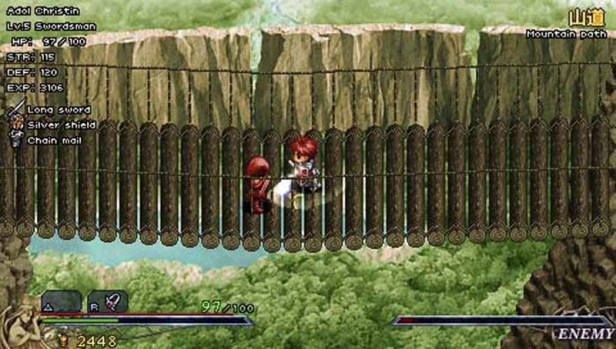 For the Ys series, this began in July 2009 when they started the franchise back at its beginnings with Ys I & II Chronicles. Based on the PC remake of the TurboGrafx-CD original (yes, it has a convoluted history), Chronicles was a compilation of the first two titles which followed Adol Christin’s earliest adventures. Known for their compelling story and amusing bump-combat system, the package provided a great introduction to the series for newcomers and established Ys among the Sony handheld audience.
For the Ys series, this began in July 2009 when they started the franchise back at its beginnings with Ys I & II Chronicles. Based on the PC remake of the TurboGrafx-CD original (yes, it has a convoluted history), Chronicles was a compilation of the first two titles which followed Adol Christin’s earliest adventures. Known for their compelling story and amusing bump-combat system, the package provided a great introduction to the series for newcomers and established Ys among the Sony handheld audience.
It wouldn’t be long until PSP gamers had more Ys to play – showing their commitment to Sony’s ecosystem, this was the first new entry in years entitled Ys Seven which was designed specifically for the hardware and landed in September 2009. Featuring sweeping gameplay changes including the introduction of the party system (previous entries had mainly focused on the solo adventures of Adol) and taking place in the desert kingdom of Altago – the new direction wasn’t beloved by everyone, but it became the highest selling Ys game in Japan, clearing 70k copies domestically.
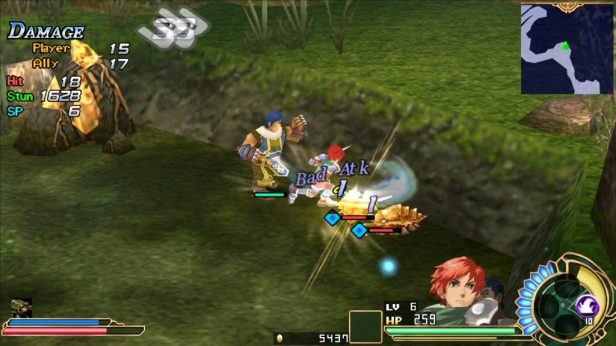 It was a return to more traditional Ys gameplay with the next PSP entry, which was Oath in Felghana which hit Japan in April of 2010. Widely seen as the series’ best entry (it’s definitely my own personal favourite), the game mixed light platforming with dungeon exploration and some incredibly satisfying boss battles. Sadly it didn’t resonate particularly well with Japanese consumers (30k sold), but it was part of a new lease of life for the franchise in the west.
It was a return to more traditional Ys gameplay with the next PSP entry, which was Oath in Felghana which hit Japan in April of 2010. Widely seen as the series’ best entry (it’s definitely my own personal favourite), the game mixed light platforming with dungeon exploration and some incredibly satisfying boss battles. Sadly it didn’t resonate particularly well with Japanese consumers (30k sold), but it was part of a new lease of life for the franchise in the west.
See, around this time the North American publisher XSEED began to take an interest in Ys, starting a long-running partnership with Falcom to bring multiple of their games overseas. But they weren’t going to follow release order – they unsurprisingly made Ys Seven their first title in August 2010, likely due to its higher production values and more modern feel. Oath in Felghana followed (November), with Chronicles landing in February 2011.
 European releases were messier due to XSEED not having a presence in the region, but digital versions were made available. It all helped to raise awareness of the brand – alongside the Steam port of Origin, Ys was receiving critical acclaim and gamers were slowly discovering what a brilliant action-adventure franchise it was.
European releases were messier due to XSEED not having a presence in the region, but digital versions were made available. It all helped to raise awareness of the brand – alongside the Steam port of Origin, Ys was receiving critical acclaim and gamers were slowly discovering what a brilliant action-adventure franchise it was.
New hardware and new horizons
In Japan, Falcom had a fitting swansong for PSP that would pay tribute to their two most successful franchises. This was Ys vs. Sora no Kiseki: Alternative Saga – a crossover with the popular Legend of Heroes titles which landed in Japan in July of 2010. Playing more like a fighting game than an RPG although with a nice Ys twist, the title sold 45k in the region which was a reasonably solid performance.
 Given their recent history of localizing every PSP Ys title available it seemed a safe bet that XSEED would pick it up for overseas release but sadly this wasn’t to be – Alternative Saga remained Japan-only likely due to a combination of the game’s status as a spin-off and the handheld’s declining hardware sales and rampant piracy. It was a shame, as the franchise would take a brief hiatus before the next entry landed – thankfully on a much more relevant piece of hardware.
Given their recent history of localizing every PSP Ys title available it seemed a safe bet that XSEED would pick it up for overseas release but sadly this wasn’t to be – Alternative Saga remained Japan-only likely due to a combination of the game’s status as a spin-off and the handheld’s declining hardware sales and rampant piracy. It was a shame, as the franchise would take a brief hiatus before the next entry landed – thankfully on a much more relevant piece of hardware.
In 2011, Sony launched PSP’s successor (the PlayStation Vita) and Falcom immediately announced they were on board, with their first title landing a little under 12 months after the console’s release. This was Ys: Memories of Celceta, a remake of the fourth entry in the series which rewrote the canon of the two previous versions. Following the groundwork of Ys Seven in focusing on team-based combat and rock-paper-scissors based attacks combined with a story about Adol waking up with no memories in the forest of Celceta, it went on to become the highest-selling Ys game in Japan to date at 82k copies thanks to some solid reviews (I loved it).
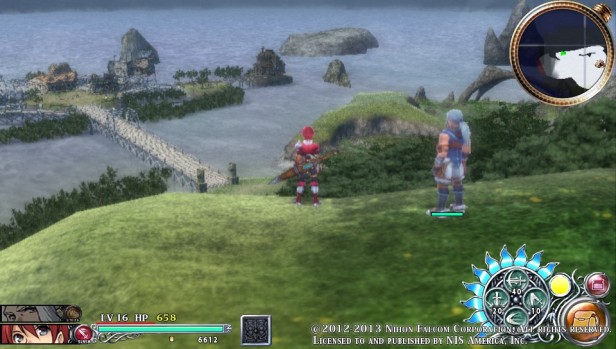 Unlike Alternative Saga, it didn’t take long for XSEED to leap on this one, announcing a localization which was completed by the end of 2013. They splashed out too, providing a beautiful limited edition that included a full map and soundtrack CD, which helped make the title a success overseas despite the Vita’s questionable hardware sales at the time.
Unlike Alternative Saga, it didn’t take long for XSEED to leap on this one, announcing a localization which was completed by the end of 2013. They splashed out too, providing a beautiful limited edition that included a full map and soundtrack CD, which helped make the title a success overseas despite the Vita’s questionable hardware sales at the time.
What was most interesting to note about Memories of Celceta however was the way the European release was handled. XSEED would partner with NIS America who took over distribution duties in the region, in a precursor for something that would happen to the Ys franchise in the future – and sadly, not in a good way at all.
The darkest timeline
At Sony’s TGS press conference in 2014, Falcom announced a new Ys game was in development – Ys VIII was a brand new entry expanding on the gameplay style of Seven and Celceta that was due to debut on Vita and (in a first for the franchise) would also come to Sony’s newest home console (PS4) as well.
 True to their world, Ys VIII: Lacrimosa of Dana released on Vita in Japan in July 2016 to rave reviews, many of which praised the narrative-focused steps forward the title had taken over its predecessors. It also made a name for itself as one of the prettiest titles available on the handheld at the time – all of which led to it being the biggest-selling entry in the franchise yet at 90k for the Vita version alone. It seemed Falcom’s love affair with the series on Sony handhelds was going from strength to strength.
True to their world, Ys VIII: Lacrimosa of Dana released on Vita in Japan in July 2016 to rave reviews, many of which praised the narrative-focused steps forward the title had taken over its predecessors. It also made a name for itself as one of the prettiest titles available on the handheld at the time – all of which led to it being the biggest-selling entry in the franchise yet at 90k for the Vita version alone. It seemed Falcom’s love affair with the series on Sony handhelds was going from strength to strength.
Unfortunately this wasn’t to last long – when the PS4 port released a year later in May 2017, it featured a range of new features including extra dungeons, new story content and new difficulties – making the Vita version wholly inferior by comparison. The company had done a similar thing with Tokyo Xanadu, which received an expanded PS4 port not long after the Vita original (which, by the way, offers a nice alternative if you’re looking for a similar action-RPG to Ys).
 While the version differences were annoying, the way its localization was handled was downright insulting. Rather than series staples XSEED, it was announced that Nippon Ichi Software America had won the contract to bring the game west – which was good news for Vita fans as the handheld port had been picked up too despite being content and technically inferior.
While the version differences were annoying, the way its localization was handled was downright insulting. Rather than series staples XSEED, it was announced that Nippon Ichi Software America had won the contract to bring the game west – which was good news for Vita fans as the handheld port had been picked up too despite being content and technically inferior.
Sadly it came with a host of caveats, the main one being that the translation itself was a complete shambles so much so that a fan campaign received significant media coverage highlighting just how bad it was – leading to an apology by the NISA president. Eventually this was fixed via a free patch but the damage had been done – although oddly it didn’t seem to hurt the Falcom/NIS relationship too much as they later collaborated to bring Lacrimosa of Dana to the Nintendo Switch.
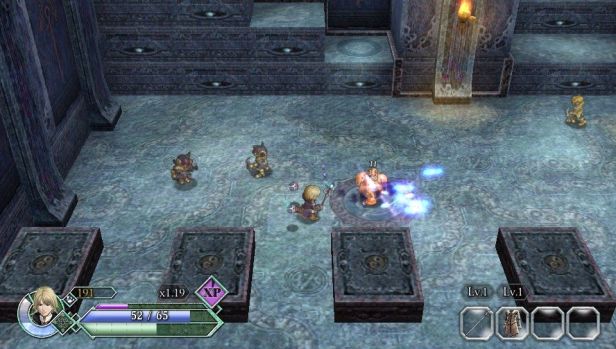 Just as Ys VIII had been announced at a Sony conference, so too would be the final Ys game ever to hit a Sony handheld – this was Ys Origin which was revealed at Sony’s PlayStation Experience event in December 2016. This was interesting for two reasons – it was at a western conference and it marked a return to Falcom licencing out ports to third parties (in this case Dotemu), just as they’d started on PSP with Ark of Napishtim.
Just as Ys VIII had been announced at a Sony conference, so too would be the final Ys game ever to hit a Sony handheld – this was Ys Origin which was revealed at Sony’s PlayStation Experience event in December 2016. This was interesting for two reasons – it was at a western conference and it marked a return to Falcom licencing out ports to third parties (in this case Dotemu), just as they’d started on PSP with Ark of Napishtim.
Origin itself was another great addition to the spread of Ys games available on Vita – designed around the earlier ‘solo adventure’ sensibilities, it’s widely regarded as the best the franchise has to offer alongside Oath in Felghana. Interestingly it also received two English physical releases – one from Arc System Works in Asia and one from Limited Run Games in North America, showing how publishers were clamouring to get their hands on such a well loved title.
Future Ys games on Vita
It seems that Ys Origin will be the last game in the series to land on Sony handhelds, with Falcom now fully shifted to PS4 development with the recent Trails of Cold Steel sequels. Without a successor in sight for Vita, it’s unlikely they’ll backtrack from this decision.
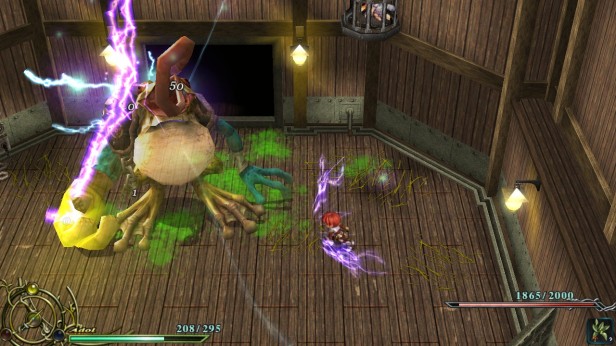 I suppose there’s the smallest possibility that Dotemu might pick up the Steam port of Ark of Napishtim and convert this to PS4 and Vita again, but this seems unlikely at this late stage (although it would be an amusing note for the franchise to go out on – an expanded port of the game that started it all back in 2006).
I suppose there’s the smallest possibility that Dotemu might pick up the Steam port of Ark of Napishtim and convert this to PS4 and Vita again, but this seems unlikely at this late stage (although it would be an amusing note for the franchise to go out on – an expanded port of the game that started it all back in 2006).
Conclusion
It’s interesting how the Ys series has effectively run alongside the Sony handheld line throughout its life – starting on the PSP and transitioning to the Vita, Falcom have blessed both consoles with a wide selection of brilliant action-RPG’s which are regularly revered as among the best in their respective libraries. They’ve been rewarded with sales too – the games have grown in popularity over the years, with Ys VIII arguably breaking through into the mainstream JRPG audience.
There have been some moments of disappointment along the way if you’re a fan – Alternative Saga not receiving a western release was a real shame and the situation surrounding Ys VIII (both the missing content and completely botched initial localization) is something that should have been avoided altogether. Falcom’s renewed focus on PS4 is also disappointing, considering the series has had such a love affair with Sony’s handhelds.
But thanks to years of both solid ports and enjoyable new titles which received incredible translations from XSEED, Ys‘ legacy in the west (and on Sony handhelds in general) is a strong one that I hope more and more fans will discover as time goes on.

Excellent and complete post, as always. Thank you! Ys is a saga I’ve always there but actually never play, I never find the moment … I should, one day, because I’m sure I’m going to enjoy it.
LikeLiked by 2 people
Absolutely, let me know when you get around to it! I recommend starting with Origin or Oath in Felghana, my two favourites 🙂
LikeLiked by 2 people
Thanks for this. I will definitely check out the psp games at some point – particularly oath in felghana. I stumbled across memories of celcetta on vita and just fell in love withthe series. It was just so good. The music in particular was sublime. I have Ys 8 and Ys Origins ready to go 🙂 cant wait to give them both a try
LikeLiked by 1 person
Ahh yeah, you should definitely check out Oath! It’s a different beast to Celceta but so, so good. Should have a review up for Celceta soon and hopefully Oath when I get chance to revisit it.
And yep, the soundtracks in the Ys games are something else 🙂
LikeLike
Excellent post. I started into the Ys hole with Ys Seven. I try not to group the party-system and the Adol-only ones together, because I think there are benefits to both (I end up playing the “gunner” or “magic-user” a lot in the party system). Ys II was actually my favorite of the Adol solo adventures while Ys 8 is my new favorite of the party style. Sadly I ended up getting the PS4 version because I didn’t want to miss content. Celceta was wonderful on Vita.
To be honest, I’m kind of glad Falcom seemed to have picked a single system for now, even though it’s not the Vita. I don’t usually pick up two versions of the same game but I did for Tokyo Xanadu but only because I did Japanese and English eventually (vita Japanese, PS4 in English). The thing is, Tokyo Xanadu runs beautifully on Vita and I’m still miffed that they couldn’t just release the extra content in the eX+ version as DLC. (Then again getting it as DLC would have been a pain in the ass for me, considering I keep avoiding getting a Japanese PSN account.) Sure some of the added episodes take place between chapters, but it’s not like it had to be played at those moments since they were side stories…
I can see for the Cold Steel series that they needed the PS4 because they really upped the graphics in Cold Steel 3 compared to the previous two. I’m not playing Cold Steel for the graphics, but whatever… I would have loved to have the third entry on Vita so I could carry it around.
Not like I really need any more games to play on Vita, but I’d always love more games of my type to play on Vita, because I still love it 😀
LikeLiked by 1 person
Ahh, nice to hear from such a big fan of the franchise! I haven’t actually tried the Ys Chronicles games yet – you’re the first person I’ve heard who liked Ys II the most, I’ll have to check it out!
I’ve bought and played both Tokyo Xanadu and Ys VIII on Vita despite the cut content. It’s a shame, but I’m just not likely to play a lengthy JRPG on home consoles anymore.
The disappointing thing about Cold Steel is just that they took such a graphical leap forward in the first place. They seemed perfectly content on PSP for like 5 games but then suddenly Vita wasn’t enough after 2. Still, I might make an exception for my “not on a home console” rule for Cold Steel 3 😉
(and I’ll always take more games on Vita, but like you say I have such a backlog – especially with PSP stuff – that I’ll be playing for years still).
LikeLike
What awesome write up. I love the Ys game since playing Book1 & 2 on my beloved Turbo Graphx 16 CD-ROM in 1991! I was blown away by its music, voice acting (for its time), and the simplicity of its game-play mechanics. I adore this series more then the popular Final Fantasy/Phantasy Star/Secret of Mana series at the time.
I missed out on all of the Ys series after Ys III, which is the main reason why I’ve gotten the PSP/PS Vita only just a few years ago. Its better late then never and I’m very impress with what I’m seeing with the more modern Ys series like Memories of Celceta and VIII. NFC really put in a lot of love in their games, by keeping all of the charms found in earlier games and added a few new addition here and there…but nothing to complex which this series doesn’t need. For me its all about exploration and a satisfying fast combat with some little puzzle thrown in. I don’t have to waste time worrying about deep stats, jobs system or do I need to worry about a hundred ways to use my magic.
Anyway, I’m looking forward to adding more Ys to my collection and that The Oath In Felghanna is next on my list. The content you’ve created here is super essential to helping fans like myself to fill in that void that was missing much earlier in my gaming life!
LikeLiked by 1 person
What a lovely story – thank you for sharing it here 🙂
Admittedly I’ve never played Ys I & II – although they are in my backlog. Oath in Felghana is an outstanding game and I hope you enjoy it, I’m a big fan of Memories of Celeta and Lacrimosa of Dana too.
The games have been slowly evolving over time but they still keep that fast-paced action combat and sense of exploration at their core that is brilliant and yes, I agree, Falcom put a lot of love into their games.
It’s a real shame their series never reached the heights of the big JRPG franchises, but I feel like their profile has increased an awful lot over the past few years.
LikeLike